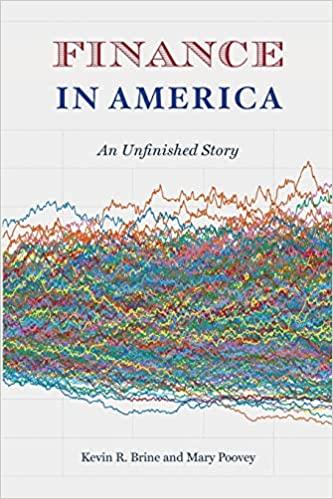Question
The MZ Mortgage Company is issuing a CMO with three tranches. The A tranche will consist of $40.5 million with a coupon of 8.25 percent.
The MZ Mortgage Company is issuing a CMO with three tranches. The A tranche will consist of $40.5 million with a coupon of 8.25 percent. The B tranche will be issued with a coupon of 9.0 percent and a principal of $22.5 million. The Z tranche will carry a coupon of 10.0 percent with a principal of $45 million. The mortgages backing the security issue were originated at a fixed rate of 10 percent with a maturity of 10 years (annual payments). The issue will be overcollateralized by $4.5 million[1], and the issuer will receive all net cash flows after priority payments are made to each class of securities. Priority payments will be made to the class A tranche and will include the promised coupon, all amortization from the mortgage pool, and interest that will be accrued to the Z class until the principal of $40.5 million due to the A tranche is repaid. The B class securities receive interest-only payments until the A class is repaid, and then receive priority payments of amortization and accrued interest to the Z class. The Z class will accrue interest at 10 percent until both A and B classes are repaid. It will receive current interest and principal payments at that time.
1) Why do you think the A tranche and the B tranche have coupon rates well below the contract rate on the mortgages?
2) What will the maturity of each tranche be assuming no prepayment of the mortgages in the pool?
3) If class A, B, and Z investors demand an 8.5 percent, 9.5 percent, and 9.75 percent yield to maturity, respectively, at the time of issue, what price should MZ Mortgage Company ask for each security? How much will the company receive as proceeds from the CMO issue?
4) What are the residual cash flows to MZ? What rate of return (IRR) will be earned on the equity overcollateralization?
5) Assume that mortgages in the underlying pool prepay at the rate of 10 percent per year. How will your answers in (2) - (4) change? (hint: in years 1-9, additional principal will be paid equal to 10% of beginning loan balance; because there is prepayment, you must re-calculate the mortgage pools mortgage payment each year with the new loan amount, e.g. outstanding balance, and the number of periods remaining).
6) Assume the investors pay the prices from part (3) for each tranche, but the underlying pool of mortgage prepay at the rate of 10 percent per year. What are the yields to each of the tranches including the equity overcollateralization? Assume the price of the equity overcollateralization is $4.5 million.
7) Comparing the yields to compute prices in part (3), and the yields calculated in part (6), did any of the tranches do worse (in terms off IRR) due to the prepayments? If so, why were they affected negatively by prepayments?
8) Comparing the yields to compute prices in part (3), and the yields calculated in part (6), which tranche had the biggest increase in its yield due to the prepayments?
9) Many have proposed that lenders should keep more skin in the game. The intuition is that if lenders hold a piece of the securitization, their incentives will be better aligned with investors in the securities. Relate this idea to your answer from (5) and (6).
[1] This is a form or credit protection for the investors in the CMO tranches. Overcollateralization means that the par value of the loans at origination is greater than the par value of the bonds in the CMO. Basically, the sum of the outstanding loan balances at origination is $4.5 million greater than the par value of the CMO tranches.
Step by Step Solution
There are 3 Steps involved in it
Step: 1

Get Instant Access to Expert-Tailored Solutions
See step-by-step solutions with expert insights and AI powered tools for academic success
Step: 2

Step: 3

Ace Your Homework with AI
Get the answers you need in no time with our AI-driven, step-by-step assistance
Get Started


